What's in a Can of Paint?
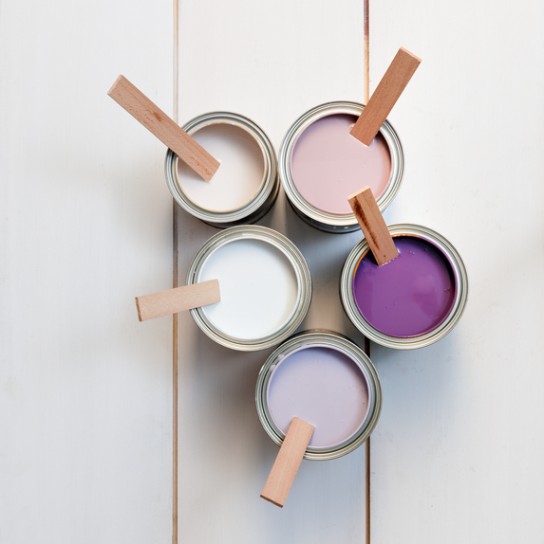
Paint has to be one of the most common but underappreciated substances ever invented. There is nothing in your life that is not in some way affected by paint. We put paint on our walls, our appliances, and on the hood of our cars, to protect these valuable surfaces. Paint comes in thousands of different types, purposes, and colors, and line distributor shelves by the hundreds.
If you are in the paint business as a distributor or applicator, realistically, you probably don’t know everything there is to know about paint. Even chemists and chemical engineers who design and experiment with advanced paint formulas realize paint composition can be extremely complicated. However, the four basic components in a typical can of paint are actually quite straightforward. A paint can’s contents holds a balanced combination of pigments, binders, solvents, and additives.
In this article you will learn:

Four different paint types
It is when you start breaking each component down when things get tricky. Safe to say, when ingredients of paint and their functions are properly mixed and applied, the results can be near magic. If they are not, then undesirable results like peeling, blistering, and outright failure begin to happen. People have been painting all kinds of things for thousands of years. Some early cave paintings date back to prehistoric times. The Greek and Roman civilizations were masterful painters — and not just on their buildings and implements. It includes their artwork, which still looks like the day it was painted because these great masters knew the basics of paint. Historically people have painted to preserve antiquity; however, chemistry advancements have drastically improved the cost and efficiency of today’s paint mixes.
When we talk about a can of paint, you immediately think of a liquid product. For the most part, paints come premixed or ready for color additives. Most commercial paints are liquid-based but some are occasionally supplied in dry, solid or powder forms. It depends entirely on your specific application for selecting a liquid or a solid product. The type of paint you choose will dictate its composition.

Waterborne paints
Known as emulsions, latex, or water reducible liquids.
Organic and non-organic paint solvents
Liquids with non-aqueous properties like oil-based alkyd mixtures.
100% systems
Liquids use reactive monomers like epoxies, polyuria, and energy curables.
Powder coatings
Dry, solid compounds applied with an electrolysis process.
Waterborne and organic/non-organic solvent products compose the majority of paints. When special applications require extensive durability, you can use 100 percent systems. Powder coatings are highly popular for exterior metal finishes. All four paint types have varying levels of quality.
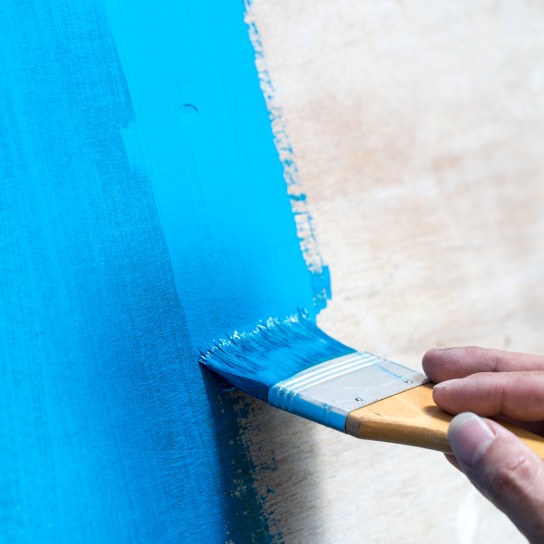
What makes high-quality paint
You are likely wondering what makes a high-quality paint. First, there is a misconception that thicker paint is better paint. This is simply not true. The best definition of ‘paint’ is a blend of liquid materials applied to a surface in thin layers that dry to form a solid film protecting the substrate’s physical properties. This is achieved by mixing paint’s four basic components in precisely the right amounts for the painted article.
The highest quality paints are not always thick, heavy solutions. Performance depends on the surface materials and the performance expected. Quality paints for the space station’s surface are designed to withstand extreme cold and continual bombardment from dangerous cosmic rays. They are extremely expensive and applied in many layers only microns thick. Quality paint for house interior walls and trim serve lighter duties. They are applied in thicker layers and fewer coats. House paints are also more economical to purchase and apply, but starting with quality paint makes all the difference. Durability and appearance still matter whether you are in space or at home watching space exploration shows on TV. The main difference between high-quality and inferior paints is the amount of specific solids in the paint can compared to the specific liquids. Do not interpret this as meaning thicker paint is better paint. Far from it. It is the exact materials in the solids working in conjunction with the liquids or solvents which matters most. Let us take a detailed look at the four parts in a typical paint can and how it applies to paint quality.
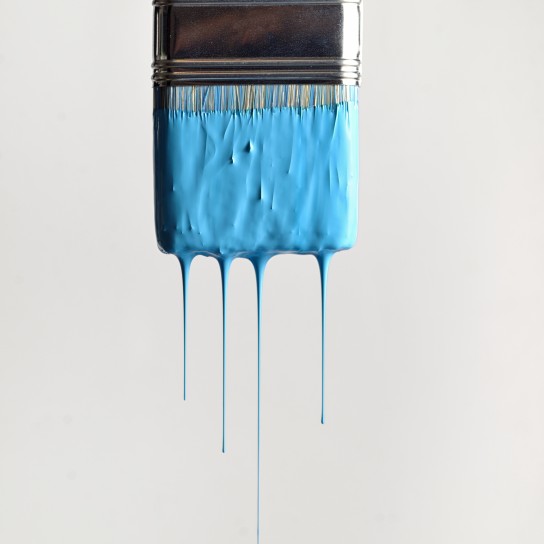
Four components in paint
No matter what a paint is designed for, it contains four primary components. It does not matter if you apply paint as an aerosol by spraying, a liquid in brushing, or as a solid through powder coating. Paint is always a medium composed of four parts or raw materials. Each component has its purpose, and it is the properties and proportions which make a high-quality paint mixture.
Great paint systems are best understood in the context of mixed raw materials concurrently combining performance and allure. Like all systems, paint relies on each component simultaneously synchronizing its desired asset performance to maximize form and function. The purpose is usually protecting a surface, making it attractive, and enduring as long as possible under expected conditions.
The method and protocol of blending a paint is critical to its desired performance. First of all, paint is not mixed into equal proportions. Pigment, binder, solvent, and additive ratios or percentages are as diverse as the products they are applied to.
- Binders or resins — 30 percent
- Pigments, fillers & colorants — 30 percent
- Coalescents — 9 percent
- Thickeners — 4 percent
- Wetting agents — 3 percent
- Solvents — 2 percent
- Dispersants — 1 percent
- Defoamers — 0.5 percent
- Biocides — 0.1 percent
- Others — 10.4 percent
Incorrect balances invariably lead to product failure, but when done right, paint pigments and binders left after solvents dissipate can last indefinitely. Let us look at what goes into paint’s four parts.
Pigments
Pigments are fine particles giving color and texture to paint’s solid components. Pigments give durability and hiding power, giving paint its bulk while providing aesthetics and substrate protection.
Binders
Binders are bonding agents which work to keep pigments together in a liquid suspension. Binders stay behind after paint dries and support performance and durability.
Solvents
Solvents are the liquid agents allowing paint pigments and binders to flow onto the painted substrate. Solvents work as the vehicle delivering the mixed paint from the can to the surface.
Additives
Additives are low-level ingredients providing specific paint properties such as mildew resistance, de-foaming, and good flow and leveling. These ‘chemical helpers’ support a paint’s pigment, binder, and solvent solution. Additives are additional ingredients that improve paint performance and aesthetics.
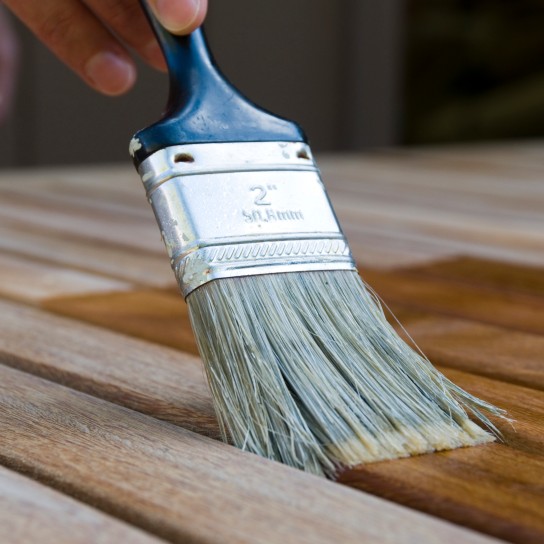
Pigments in paint
Pigments are the biggest factor for making high-quality paint. It is not that other players are not important, but paints starting with poor or inferior pigments have a weak foundation. Mixing decent paint starts with having sound pigments.Pigments are tiny grains of organic or non-organic compounds. Most paint pigments are tiny, with diameters measured in millionths of meters, or what are called “microns.” They are expressed in micron units of measurement or µms. There is a correlation between micron size and pigment performance. Large pigment particles measuring 5 µms tend to be duller and darker. They have more protective power than smaller pigments of 0.5 µms that appear much more colorful and glossy.
There are two main pigment types, both having unique properties and can be cleverly mixed for extremely high performance. But this does come with a cost. Specialized pigments used in costly automotive finishes can be hundreds of times more expensive than universal pigments used in cheap house paint.
Strong paint pigments:
- Provide a stable and solid base for binders to react
- Give color, texture, and physical properties for finished surfaces
- Protect permeability for moisture and resistance to ultraviolet light
- Have sufficient covering power to coat surfaces
- Be non-toxic and healthy for both applicator and finished environment
- Be aesthetically pleasing when finished
Prime Pigments: In pigment terms, “prime” means “color-giving.” Prime pigments give primary color, shine, and hide under both wet and dry conditions. A quality-based paint starts with excellent prime pigments, but this can be pricey. Metal-flake or gold-leaf pigments in auto finishes are expensive. Lesser prime pigments containing natural dyes or synthetic chemical structures are designed for economies of scale.
Extender or Filler Pigments: Extender, or filler, pigments are lower-cost, bulk filler pigments giving mass and covering power. They are more often used for large painting projects where massive coverage is important and top-notch performance is not needed. Most house paints have a significant number of extender pigments. Fillers let them cover and hide economically, with a little filler pigment going a long way.
Natural Pigments: Natural pigments are the least expensive. They originate from various clay, silica, mica, calcium carbonate, zinc oxide, and talc bulk mining. Natural pigments were first used on cave walls and are still widely applied today.
Synthetic Pigments: Synthetic pigments are the newcomers but have made great progress in the last few decades. Chemically engineered pigments include synthetic molecules like calcinated clay, pyrogenic silica, and blanc fixe.
Paint pigments have two more classifications giving paint their basic properties differing in protection, filler or extender content, and specific color spectrum.Reactive Pigments: Reactive pigments are usually anti-corrosive protective types.
Passive Pigments: Passive pigments cover the fillers, extenders, and colors.
Organic pigments generally give brighter colors and higher sheens than non-organic fillers, the trade-off being durability. Natural products are less UV-resistant and yellow easily, making them less desirable outdoors. Synthetic products are tougher, but there is one organic pigment durable on exterior finishes - titanium dioxide. Titanium dioxide is costly but often included in small amounts to give excellent paint pigment performance.One last word on what you need to know about pigments is how pigment volume concentrate (PVC) affects paint sheen. Low-PVC leaves a glossy finish while high-PVC gives a flat appearance.
- Interior Flat Paint — 65-75 percent
- PVC Exterior Flat Paint — 45-55 percent PVC
- Satin Finish Paint — 35-40 percent PVC
- Semi-Gloss Paint — 25-35 percent PVC
- Gloss Finish Paint — 20 percent PVC

Paint binders
Binders are a paint’s backbone. They form a solid structure enabling pigments to cover and colorize a substrate’s surface. Binders do exactly what their name suggests, they bind pigment molecules to substrate structures and give paint its adhesion, surface tension, integrity, and durability. Properly bonded paint will not lift, peel, blister, or detach from its surface. That is, if both the substrate and binder possess the surface energies enabling adhesion and other physical properties. The science of pigment, binder, solvent, and additive blending is complex. Without proper binders, the failure rate of paints rises dramatically no matter how good the pigment or boosting additives are. Binders are the key to long-term paint performance. They allow permanent adhesion, give durability for cleaning, resist abuse from the elements, and allow recoating if eventually needed.
Two types of paint binders
The two types of paint binders are alkyd binders and latex binders. Alkyd binders are oil-based binders, and are naturally produced from vegetable oils or synthetic-based chemicals processed as petroleum byproducts.The term “latex” is usually associated with rubber, but is not the case with latex paints.
For years, oil-based binders were the first choice for tough applications like outdoor metals. But early binders contained volatile organic compounds (VOCs) making them health hazards and banned by environmental authorities. Lead-based paints are the best example of VOC binders and are gone from the market. Now, hybrid or modified alkyd binders are very advanced, safe, and tough.
They are waterborne or use liquid water as their polymer transition for binding solid pigments to a substrate surface. Water becomes the solvent or medium blending pigments, the latex binding agent, and any specialized additives into the paint finish. Latex-based or waterborne paints have made huge advances in technology over the last few decades. They are now popular on everything from car paints to metal fences.
Latex binders are mostly acrylic-based products, but can vary depending upon desired properties. Acrylic latexes are best recognized as forming surface films that evenly distribute pigments for a smooth finish. Binders from 100 percent acrylic-monomer composition provide good adhesion and workability, but can be expensive. Vinyl acrylics are an excellent waterborne alternative. Vinyl acrylics are typically less expensive with less durability, but are a compromise applicators must decide.No matter if the binding agent is oil or latex, both paint types have made significant scientific strides over the past two decades. What is in a 21st-century paint can is quite different from the 1990 version. Waterborne paints have been around since the advent of man, but modern breakthrough emulsion technology has advanced “emulsion products” to perform superbly while being easy-to-clean, and be much more environmentally friendly.Also worth noting, paint binders come in different application systems. Most alkyd and latex binders are one-part procedures where the pigment, binder, solvent, and additive are mixed and left in a stable solution. They stay stable for years unless exposed to air. That is not the case with two-part binding systems like epoxy paints. Epoxy paints cure from a unique chemical reaction that initiating immediately when a binder (like epoxy resin) is mixed with another reactive component, and with pigments and solvents to provide physical performance and aesthetics.
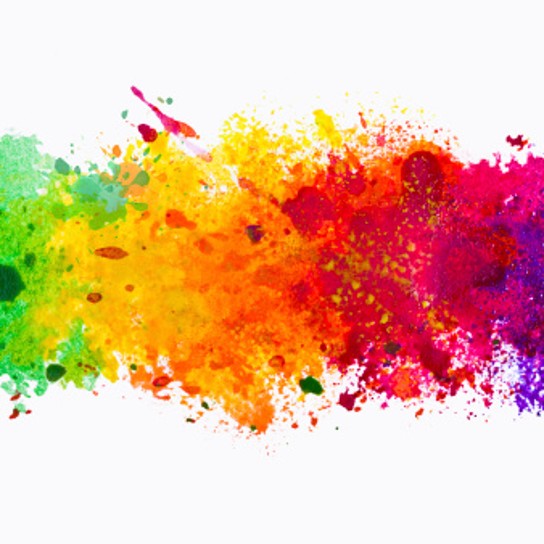
How alkyd binders and latex binders differ
Alkyd binders dry by chemically converting reactions with air during evaporation. Whether vegetable or mineral oil-based, alkyd paints allow their pigments to flow onto a surface and bind at a relatively predictable rate. Temperature and humidity have an effect, but eventually oxygen absorbs oil and the paint dries to a hard, even surface with a different chemical signature. The problem with convertible binders is they are hard to repaint because old paint and new products are chemically different. Alkyd binders are called “non-convertible binders” because they stay chemically stable during their drying process.
Latex binders dry by a different process. Latex binders are known as non-convertible binders curing or chemically coalesce by reacting with the pigment and binding agent through a process called a “thermoplastic reaction.” However, when paints with latex binders dry, they remain chemically consistent and don’t convert their final signatures. This makes them easy to paint over or touch up. Latex binders and water-based solvents are excellent in the right conditions, but need time to chemically bond. Latex products are highly affected by high heat or sudden moisture loss from wind or fans, and are also susceptible to excess or insufficient water.
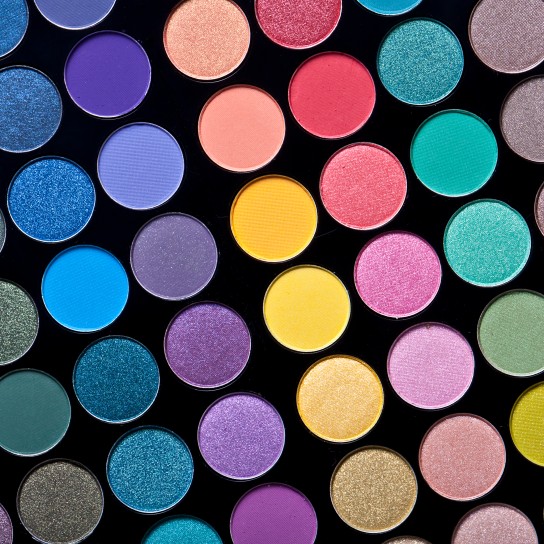
Paint solvents
Paint solvents are the liquid medium turning solid pigments and binders into a workable fluid mass. They are also referred to as “carriers” or “vehicles.” Solvents enable paints to be uniformly sprayed, rolled, or brushed on to a substrate surface. Solvent-based paints are structured according to their specific properties. This affects their viscosity or thickness and rate of flow. Surface tension and evaporation rate are the most important solvent aspects.
Typical solvent properties include:
- Solvent Weight: measured in pounds per gallon
- Specific Gravity: density compared to water
- Boiling Range: also called distillation range
- Flash Point: flammable solvents <140° F, combustible solvents >140° F
- Evaporation Rate: Compared to butyl acetate
- Kauri-Butanol (KB) Value: Kauri-Butanol value measures overall solvency
It is important to stop for a moment and think about how a typical painting process works. We have discussed three parts, so far. Pigments give paint color, depth, and coverage. Binders give it adhesion, strength, and durability. Solvents do a special job: they allow the pigment and binder blend to flow onto a surface and spread before drying.

Two distinct mixing equations
- Pigments + Binder = Solids
- Solids + Liquids = Coating
In liquid paint applications, there is no way around using some sort of solvent or diluent to uniformly apply to a surface. The question is what type of solvents are best with specific solid blends? The answer is your paint solvent(s), or carrier vehicle, must be compatible with your binding agent. Most pigments are adaptable with solvents, but is not the case with binders.We are back to two favorite liquid paint partners: oil and latex. There’s not much variation with water coalescing solvents. The only range is temperature, as in hot or cold.
Oil-based or organic hydrocarbon solvents
- White Mineral Spirits (turpentine and general, all-purpose paint thinner)
- Organic Linseed Oil
- Butyl Acetate
- Ethyl Alcohol
- Ketone
- Acetone
- Toluene
- Xylene
Chemical solvents often carry a negative connotation. Many applicators simply prefer waterborne products to avoid perceived potential toxicity as well as other environmental controls such as flammability. Waterborne systems simplify choices, and when properly formulated with the right additives, water-based paints are especially effective.
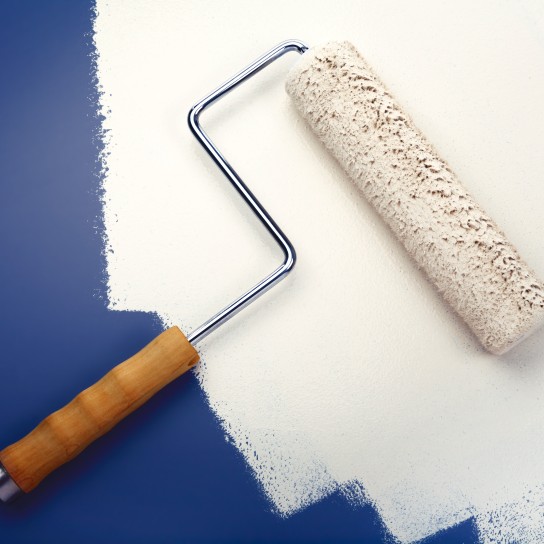
Paint Additives
The right pigments mixed and matched with the correct binders and solvents or co-solvents, and then applied properly. If those matched ingredients are in your paint can, you are off to a good start. But you can get an even better system if you boost your paint mixture with a suitable additive.
Here is a bit of trivia from the paint world. You have heard of the term “gunge.” Rumor has it gunge evolved from the mess where paints were loaded with additives causing problems. Gunge is the acronym for “Generally Unacceptable Nasty Gooey (E)ngredients” and it certainly described the gummy, sticky messes found in inferior paints.Fortunately, today’s quality paints have sophisticated additives leaving little gunge and mess. Additive utility has grown tremendously in modern paints. The right additive package often makes good paints great.
Paint additives serve many other specific roles. No matter what type of substrate you need painted and what conditions the finished product is exposed to, you will find an additive that will do the job.
| Fungicides, Insecticides, and Biocides | Drying Accelerants | Flow Control Agents |
| Defoaming Additives | Emulsifiers | Plasticizers |
| Corrosion Resisters | UV Stabilizers | Adhesion Promoters |
| Anti-Skimming Agents | Texturizers | Deodorants |
| Silicone Products | Surfactants | Thickeners and Rheology |
| Modifiers | Co-solvents |
| Anti-Blocking Agents | Inhibitors | Dispersants |
| Leveling Agents | pH Buffers | Flash Rusts |
| Freeze / Thaw | Substrate Wetting Agents |
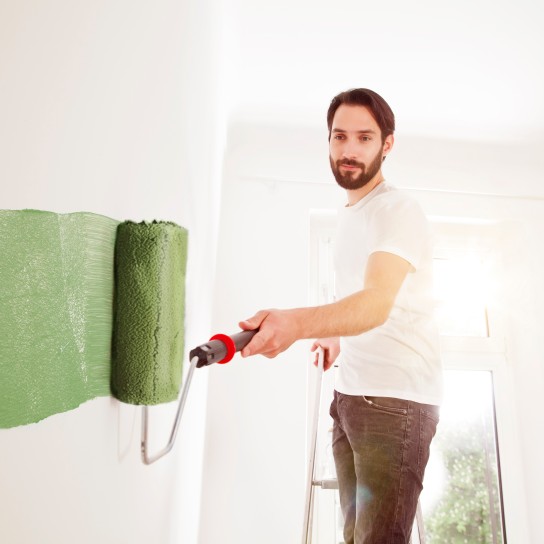
What makes for quality paint?
“Quality” is often over-used in sales and marketing, and this is true in paint like most other products and services. Basically, quality means the consumer will meet performance expectations at a fair and competitive price. The axiom “You get what you pay for” is the most common sentiment in the paint industry. Ask any painting professional what quality paint is and you will get the same immediate answer: It’s a paint they can easily work with and which will last. Quality paints come from properly blending pigments and binders inside a liquid solvent. Often, additives are put in for specific applications. The list is too extensive to mention here, but it is worth mentioning that quality paint producers use the broadest array of additives. Not all paints are created equal by any means. If you are looking for true quality in paint products, you are well advised to choose a quality distributor.
We are here for your coatings needs
Our Coatings & Construction division is your best source for high-quality paint and coating raw materials. We know what belongs in a can of paint and we will guide you toward the perfect ingredients for your project.
As a leading paint and coatings solutions provider, we offer an extensive range of raw materials through a distribution network of more than 190 locations. Our experience and connections with top suppliers ensures we source your ideal paint, coatings, and other items. We know which manufacturers supply excellent raw materials to help our customers succeed. That’s true today, and into the future.
Submit the form to the right to begin the conversation
1. http://www.resene.co.nz/homeown/problem-solver/Whatsinacanofpaint.pdf
2. https://www.dunnedwards.com/colors/specs/posts/whats-in-your-paint
3. https://nzic.org.nz/ChemProcesses/polymers/10D.pdf
4. http://www.industrialpaintquality.com/pdfs/ingredientsofpaint.pdf
5. https://www.scribd.com/document/252872052/PAINT-ingredients-pdf
6. http://www.idc-online.com/technical_references/pdfs/chemical_engineering/Composition_of_paints.pdf